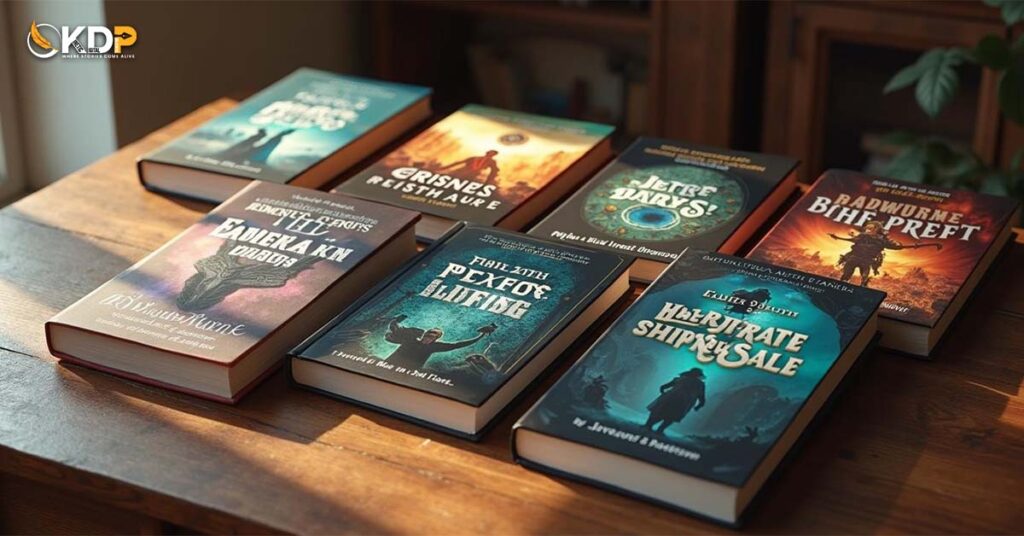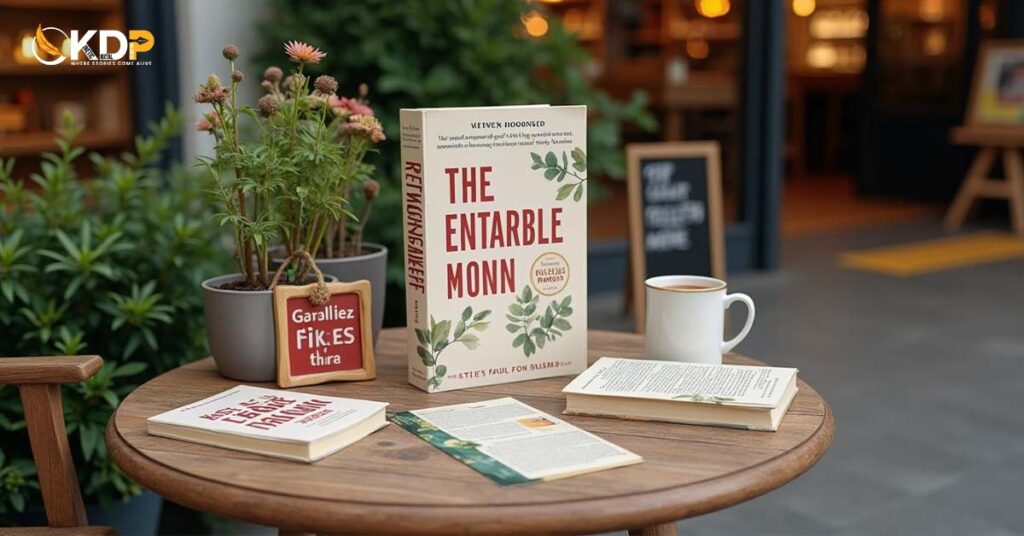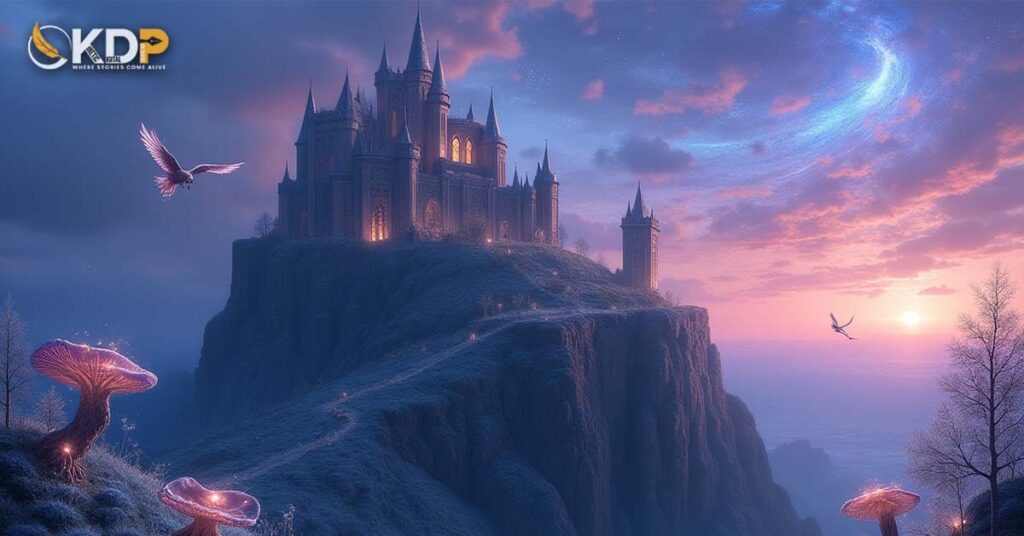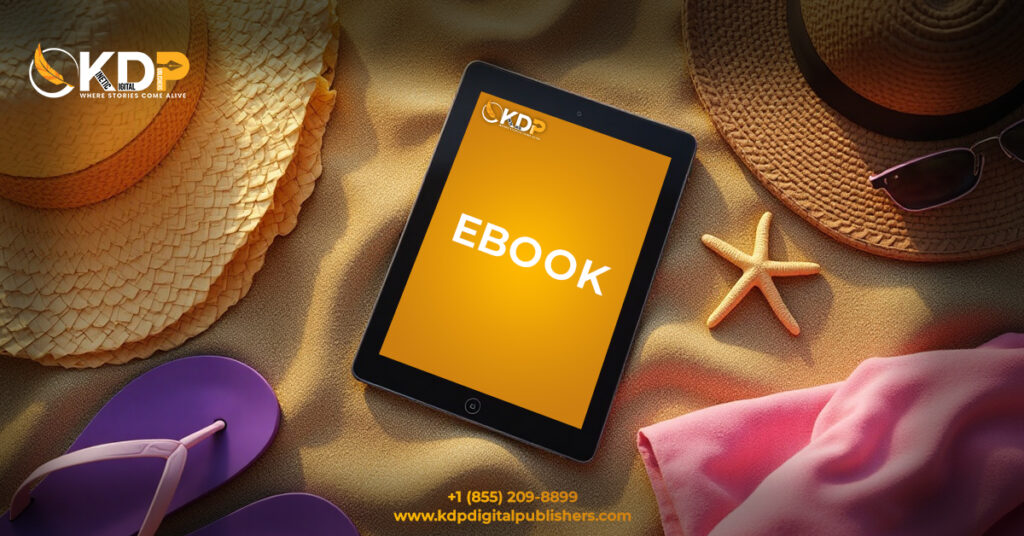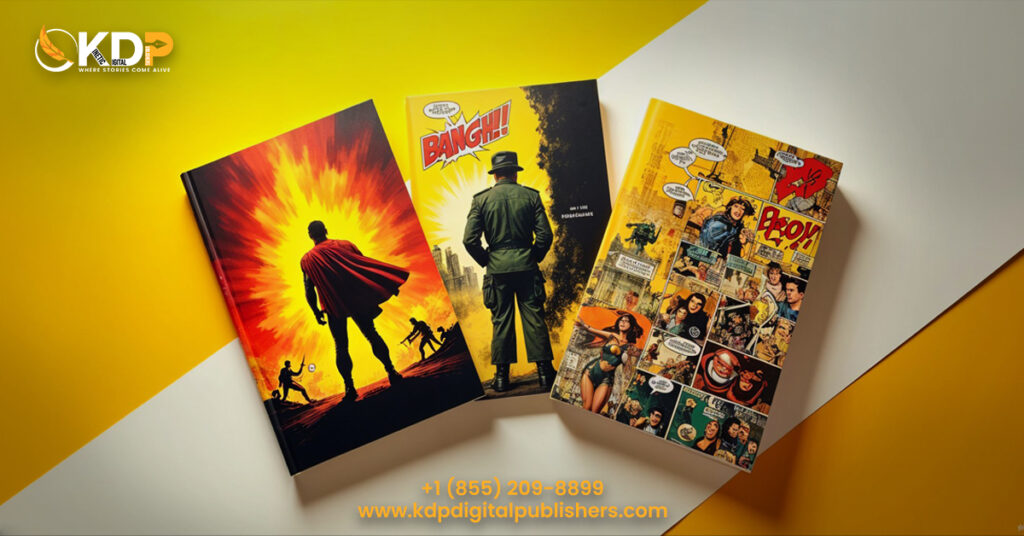Here’s How to Get a Graphic Novel Published
You did it. You wrote and illustrated an entire graphic novel, or maybe just a hefty chunk of one. You bled ink, burned through storyboards, wrestled with pacing, panels, and plot twists. You lost sleep over dialogue balloons that wouldn’t fit and spent hours debating whether that last panel would be better with a close-up or an establishing shot. Every page is a labor of love, and now, after months or even years of hard work, you’re staring at your creation, feeling proud yet overwhelmed.
But now, the big question lingers: How the hell do you get this thing published? You’ve invested everything into it, so it’s time to make sure your masterpiece reaches the readers who deserve to see it. But where do you even start?
No Agents? No Problem. Here’s the Real Path to Getting Published.
Good news: You’re not alone. Every creator, at some point, has sat at that desk, blinking into the abyss of the publishing world, wondering how to navigate this daunting industry. The better news: this guide is going to walk you through exactly how to get a graphic novel published. From understanding what publishers are looking for, to decoding how graphic novel agents work, to why pitching your art on Instagram might get you some love (but definitely not a book deal), we’ve got you covered. We’re here to make sure you don’t waste any time or energy figuring out the wrong things. Forget the fluff and the boring advice. This is the practical, real-world approach to getting your graphic novel published, the kind of advice you wish you’d had before you even started penciling page one.
A PDF Isn’t a Pitch. This Is
We’re not saying it’s easy, but with the right strategy, some patience, and a healthy dose of persistence, you can turn your graphic novel into a tangible book on a shelf (or, in the case of webcomics, on a reader’s screen). Whether you’re aiming for the glittering heights of traditional publishing or taking the indie route, understanding how to get your graphic novel into the hands of a publisher and into the hearts of readers requires knowing a few key things upfront. And trust us, it’s about more than just sending a PDF of your work and hoping for the best.
In the following steps, we’ll take you through everything you need to know to get your graphic novel published. We’ll break down the different paths you can take: traditional publishing, indie publishing, crowdfunding, and even webcomics. We’ll talk about the critical pieces of your submission package and how to craft a pitch that makes publishers sit up and take notice. You’ll also learn how to find the right graphic novel agents (and how to know if they’ll be the right fit for you). Finally, we’ll answer all the tough questions you’re wondering, like, “What happens after I submit?” and, “What if I get rejected?” Spoiler alert: rejection happens. But that’s all part of the game.
Figure Out What You’re Pitching (Because Yes, It Matters)
Before we even talk about sending your baby off to a publisher, let’s back up.
The way you pitch your graphic novel and what materials you need depend entirely on what kind of project it is.
Is It Fiction or Nonfiction?
This is a big one. Graphic novel publishers treat nonfiction differently from fiction.
If your book is a memoir, biography, or narrative journalism (think Maus, Persepolis, or They Called Us Enemy), you’ll often pitch it like nonfiction: via a proposal, outline, sample pages, and a bio.
If it’s a fantasy, sci-fi, romance, horror, or kidlit series? You’ll likely need a completed script (or detailed outline), plus fully finished pages and concept art. YA and middle grade graphic novels, currently booming, often follow this route.
Do You Need to Finish the Whole Thing First?
Short answer: Nope.
Longer answer: Publishers and agents don’t want you to hand over a 300-page book. They want to know that:
- You have a compelling story
- You understand visual storytelling
- You can deliver the final book (eventually)
What to prepare instead:
- A polished synopsis or script (10–20 pages minimum)
- 5–15 fully finished sample pages (inked, lettered, colored if applicable)
- A one-page pitch/query
- Optional: concept art, character sheets, style references
You’re showing proof of concept, not delivering the whole product. Think of it like a TV pilot, not a full season.
Decide Which Publishing Path You Actually Want
You might be thinking that graphic novel publishers are the only way to go, and sure, that’s a classic route. But how to get a graphic novel published doesn’t always mean taking the traditional path.
Today, creators have several avenues to explore, each with its pros and cons. The publishing world has shifted, and it’s crucial for creators to understand all their options before deciding. From webcomics and self-publishing to print-on-demand services that let you get your book into readers’ hands without a big publishing house behind you.
Here’s the thing: graphic novel agents and publishers are not just gatekeepers. They’re partners in making sure your work reaches the right audience. But with the growth of alternative publishing methods, you can opt for different routes based on what you want to achieve. Let’s break it down:
Traditional Publishing (With or Without an Agent)
Ah, the classic path of publishing, it’s what every creator dreams of when they first pick up a pencil and sketch out their vision. You’ve written your graphic novel, poured your heart into every page, and now it’s time to turn that dream into reality. The traditional publishing route is the one most graphic novel creators aspire to, the one that lands you an agent, gets your book into the hands of the right graphic novel publishers, and (hopefully) sees your book sitting proudly on bookstore shelves like Barnes & Noble. Sounds like a fairy tale, right? Well, it’s not without its challenges, but when done right, it’s the key to turning your passion project into a professional career.
No Agent, No Deal? Here’s Why That’s (Mostly) True
So, how does this process work? First things first: you’ll need to land a graphic novel agent. Think of this agent as your champion, your advocate in the publishing world, and your connection to the big players. But not just any agent, you need someone who understands the world of graphic novels and knows how to sell them to publishers. You might be asking, “Why do I need an agent to publish a graphic novel?” Well, traditional graphic novel publishers typically prefer agented submissions, and a good agent is more than just an intermediary.
The Pitch Is On, Now It’s Game Time
Once you have secured that agent, the real work begins. They will take your graphic novel proposal or manuscript and pitch it to major graphic novel publishers, hoping to strike a deal. If all goes well, you will secure a publishing contract, and from there, the sky’s the limit! But remember it’s a competitive world out there, and even the most polished pitch can get lost in the shuffle if it doesn’t stand out.
Who Publishes the Best? Start Here
Major traditional graphic novel publishers include:
- Scholastic Graphix
- First Second (Macmillan)
- Random House Graphic
- HarperAlley (HarperCollins)
- Abrams ComicArts
These houses publish big names, Raina Telgemeier, Gene Luen Yang, Molly Knox Ostertag and they typically require agented submissions.
So if you’re aiming high, you’ll want to start querying graphic novel agents.
Indie Publishers (Some Accept Unagented Work)
If you don’t have an agent or aren’t ready to get one, indie and mid-sized publishers might be your golden ticket. Some graphic novel publishers actively seek out unagented creators.
A few worth checking out:
- Iron Circus Comics (crowdfunded + indie)
- Oni Press
- Silver Sprocket
- Mad Cave Studios
- Avery Hill (UK)
- Andrews McMeel (particularly strong with webcomic-style work)
Do your research. These publishers each have a distinct editorial taste. Submitting your dark fantasy epic to a house known for slice-of-life memoirs? That’s a fast track to the rejection pile.
Webcomic Now, Print Later
You don’t need to wait for a publisher to believe in your work. You can start serializing it online today.
Creators like Ngozi Ukazu, Rachel Smythe (Lore Olympus), and Shen T (Owlturd) all built loyal audiences before landing traditional book deals.
Starting as a webcomic doesn’t just build buzz; it proves you can deliver consistently, engage readers, and market your own work.
Crowdfund It (and Be Your Own Publisher)
Kickstarter and similar platforms have changed the game. You can raise funds, hire a printer, and put your graphic novel directly in readers’ hands, no agent or editor required.
You’ll need:
- A well-designed campaign
- A strong preview or sample
- A realistic production plan (print costs, shipping, stretch goals)
It’s not easy, but it’s a real business model, and for some creators, it’s the most rewarding option.
Build a Submission Package That Doesn’t Suck
Okay, so you’ve picked a path. Now you need to submit like a pro.
Let’s go piece by piece.
1. The Query Letter (aka “The Email That Opens the Door”)
Whether you’re emailing an agent or submitting to a publisher, this is where they meet you and your story for the first time.
It should include:
- A short, snappy pitch: two sentences max
- A story summary
- Comp titles: “It’s Mooncakes meets Stranger Things”
- Format: “220-page full-color YA graphic novel”
- Your bio: keep it relevant and human
Example:
Dear, kdpdigitalpublishers
I’m seeking representation for my graphic novel, Witch Season, a 200-page queer YA fantasy with a creeping horror edge. It’s Pumpkinheads meets Midsommar, with themes of self-doubt, rebellion, and rural magic gone wrong.
Then you include your background, artistic style, publishing history (if any), and links to your portfolio.
2. Sample Pages (Yes, They Need to Be Polished)
5 to 15 pages. Inked. Lettered. Colored, if your book will be.
No rough pencils. No, “imagine this looks better.” You’re applying for a job, so show them the product.
Pick pages that show:
- Emotional beats
- Dialogue pacing
- Setting and action
- Visual storytelling chops
3. Synopsis or Full Script
Some publishers want a synopsis; others want the full script. Make sure yours is readable and structured, not a wall of text.
For scripts, use a format that clearly lays out panel descriptions, dialogue, and scene flow. There are comic script templates online.
4. Optional Extras (Character Sheets, Concept Art)
These aren’t required, but they can help. Especially if your sample pages don’t show all the characters, or you’re building a visually rich world.
Keep it clean, not a messy mood board. Think: cover gallery meets production bible.
How to Find Graphic Novel Agents Who Get You (and Sell You)
Agents aren’t just deal-makers. They’re champions, career guides, red-pen-wielding collaborators. A good one will not only sell your book, but they’ll help you level up as a creator.
But not every agent reps graphic novels. And not every agent says they do understand the format.
Where to Look:
- Manuscript Wish List (mswishlist.com): Search “graphic novel”
- QueryTracker
- Publisher’s Marketplace
- Twitter (yes, still): Check #MSWL or follow agents who rep comics
- Acknowledgments sections of books you love What to Look For
- Do they actually rep graphic novels (not just illustrated picture books)?
- Do they understand the visual + narrative structure?
- Have they sold to publishers you care about?
Pro Tip
When you find an agent you like, mention why you’re querying them in your letter. “I saw you recently repped [Author X], and my work is in a similar vein.” It shows you did your homework.
What Happens After You Submit?
If you’re querying agents: expect to wait anywhere from 4 to 12 weeks, though that’s not a hard rule. Some agents will respond quickly, especially if your project hits their sweet spot or if they’re actively looking for a book like yours. Others? Well… you might never hear from them. Some will ask for a partial or full manuscript and then disappear into the void of unanswered emails. Yes, it stings. But no, it’s not personal. It’s publishing.
A slow dance with a partner who might not show up or might show up three months later wearing a different outfit and asking for a rewrite.
If you’re submitting directly to a graphic novel publisher, you can expect even longer wait times, think 3 to 6 months minimum. These teams are often small and juggling multiple hats: editorial, marketing, and production. Your submission might be in a queue until the next acquisition meeting.
While You Wait, Level Up
What should you do while you wait? Don’t just obsessively refresh your inbox. Use the downtime to your advantage. Keep working on your next project (yes, start another graphic novel). Build or update your portfolio. Post your art online. Interact with other creators. Maybe even research more graphic novel agents and publishers so you’re ready for round two. Publishing is not a one-shot game; it’s a long arc of persistence, preparation, and plot twists.
Use the downtime to:
- Work on your next project
- Build your online presence
- Keep improving your craft
What If They Say No? (Spoiler: Some Will)
Rejection is part of the game. Your project might be too niche, too familiar, too risky, or too early. That doesn’t mean it’s bad.
Take the feedback, if any. Revise if needed. Submit again. Or publish it yourself.
You’re not asking for permission. You’re offering value.
Graphic Novel Publishers That Want Your Work (Really)
Let’s get concrete. Here are a few houses that actively publish graphic novels:
- First Second (Macmillan): All-ages and literary-focused
- Iron Circus Comics: Queer, diverse, and crowdfunded
- Oni Press: Darker genre work, edgy narratives
- Random House Graphic: Youth-focused, high-concept
- Drawn & Quarterly: Experimental, indie-leaning
- Silver Sprocket: Punk, radical, beautifully offbeat
Read their books. Know their style. Submit only if your work aligns.
Frequently Asked Questions About How to Get a Graphic Novel Published
Q: Do I need an agent to publish a graphic novel?
A: Not always. Many graphic novel publishers accept unagented work. But an agent opens doors to major houses and helps with contracts and rights.
Q: What should I include in my pitch?
A: A query letter, 5–15 finished pages, a synopsis or script, and a brief creator bio. Extras like concept art help.
Q: Should I self-publish or go traditional?
A: It depends on your goals. Traditional gives you distribution and support. Self-publishing gives you control and speed. Some creators do both.
Q: How long does it take?
A: Getting an agent: 3–12 months. Selling to a publisher: 3–6 months. Publishing: 12–24 months. It’s a marathon, not a sprint.
How to Get a Graphic Novel Published (and Not Lose Your Mind)
Publishing a graphic novel isn’t just about finding someone to print your pages. It’s about building a career, a readership, and a voice that gets heard.
You’ve got options:
- Traditional? Pitch sharp.
- Indie? Find your weird.
- Crowdfunded? Build your tribe.
- Webcomic? Post, promote, persist
No matter which path you take, don’t wait for someone to hand you permission. Learn how to get a graphic novel published, yes. But more importantly? Keep creating!
Your story deserves to be inked, printed, and proudly held by someone who sees themselves in it.
Now go make it happen.
Final Verdict
Getting a graphic novel published is a convoluted process that involves numerous edits, emails, and a great deal of perseverance. Here’s what nobody’s telling you: you’re already doing something right if you’ve made it this far. You have produced something. You’re ahead of most people who never get past the idea stage just because of that.
Staying in the game is now crucial. Ask the appropriate agents. Continue refining your pitch. Develop your portfolio. Participate in the community. And above all, never stop creating. Your story doesn’t end with a single “no.” It could simply indicate that you’re getting closer to the correct “yes.”





